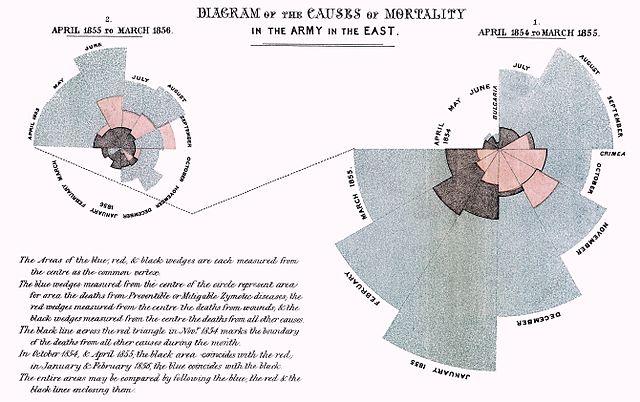DPP is a program designed at what level of prevention?
Secondary (mostly), as participants are pre-diabetic.
For those who are not considered pre-diabetic and otherwise healthy, it would be primary prevention.
Adults (not including older adults) should have a blood pressure at or below what systolic and diastolic values?
120/80
A nurse is listening to a patient. They nod, and after a brief pause, say "Go on...." This is an example of what therapeutic communication technique?
Expanding (a.k.a. expansion)
The MMR shot is composed of what specific vaccines?
How many years in a row (within 5) has Nursing been rated as the most trusted profession in the United States according to Gallup polling?
21!

According to the ANA Professional Nursing Model, what concept supports a nurse's caring, value, wisdom, and energy? Remember the flame picture!
Ethics (a.k.a. what nurses call an ethical underpinning)

Name three graduate degrees (above the BS/BA/BSN level) you can receive in nursing.
MSN (Master of Science in Nursing)
MN (Master of Nursing)
DNP (Doctorate of Nursing Practice)
PhD or other non-DNP research doctorates (DNS, EdD)
DM (Doctorate of Midwifery)
Not nursing specific, but can involve nursing:
MPH--Master of Public Health
MS--Master of Science

This picture is an example of what level of prevention?
Primary passive prevention.
This is a picture of the London sewer system, started in 1859 in response to the cholera outbreaks of 1853, which killed over 10,000 people, as well as the "Great Stink" of 1858.
A nurse enters the room to administer medication to a client. The nurse states, "Thank you for identifying yourself and your birthdate. I am giving you Effexor at 11 AM for you to swallow. I will watch you take it, and then enter the information into EPIC."
What right of medication administration did the nurse miss?
Right dose
What specific word is discouraged from use during therapeutic communication as some clients may react negatively to it?
Why
Name three vaccines that are available but are not given in a routine vaccination schedule in the United States.
Tuberculosis, Japanese encephalitis, smallpox, cholera, adenovirus, anthrax, rabies, typhoid fever, yellow fever.
True or false:
Babies are born without kneecaps.
True, technically. Babies are born with cartilage pieces that will fuse, harden and eventually become bony patella around age 6.
What are four of the top ten leading causes of death in the United States (as of 2020)?
1. Heart disease
2. Cancer
3. Covid
4. Accidents
5. Stroke
6. Chronic respiratory diseases
7. Alzheimer's disease
8. Diabetes
9. Influenza and pneumonia
10. Chronic kidney diseases
302 (taken in your 2nd semester of junior year) is focused on what level of prevention?
Tertiary level of prevention
What is considered the sixth (and most neglected) vital sign?
Pain

Who is this great example of a therapeutic communicator?
Mister Rogers (Fred Rogers)

How many doses of Hepatitis B vaccine should a person receive?
3
(Second dose approximately 4 weeks after the first, third dose approximately 8 weeks after the second)
Who are the two sisters in Frozen?
Anna and Elsa

Colonoscopies and mammograms are considered examples of what level of prevention?
Once you name the level, provide two more examples at this level of prevention
Secondary
Further examples: blood pressure, glucose measurements, bone density screenings for early detection of osteoporosis
How many times should you go over the rights of medication administration before giving the medication to a patient/client?
When are they (using St. Cloud hospital as an example)?
Three times--
1. When getting the medication from the dispensary (machine)
2. Outside the patient's door when getting ready to pour/serve
3. In the patient's room before administering it
What are the four phases of therapeutic communication?
Pre-orientation
Orientation
Working
Termination
How many strains of influenza virus does the annual flu vaccine protect against?
4 total
(two type A and two type B strains)
Nurses traditionally wore caps (usually white in the United States) on the job. Why was this practice discontinued?

Caps would collect approximately eight gazillion germs (the same reason neckties and long fingernails should also be avoided!)
--Note: this is unlike surgical caps, which are meant to prevent infection (in part) by covering hair and should be disposed of or sanitized after each use
What is the difference between tertiary prevention and tertiary care?
Tertiary prevention reduces the effect of disease or disability on the person
Tertiary care is extremely specialized care over a short or long period of time, usually for serious or life-threatening illnesses. Tertiary care is usually in a hospital setting.
Did you know there is a 7th right of medication that you should always know? Name it if you can!
The right reason for giving the medication
Adapt the following question to follow therapeutic communication guidelines:
"Did you experience any pain while walking to the office today?"
"Did you have any pain walking to the office today? If so, what kind of pain did you have? How would you describe it?"
What is the key difference for the DTaP and Tdap vaccines?
DTaP is given in children less than seven years old (the formulation has increased amounts of vaccine for all three diseases to provoke a stronger immune response)
Tdap is given to persons 7 and older and in booster form (only the tetanus vaccine is an increased amount)
Florence Nightingale is considered to be the founding parent of modern nursing, as well as one of the first medical statisticians. She was known for serving as a nurse in what war?
The Crimean War
